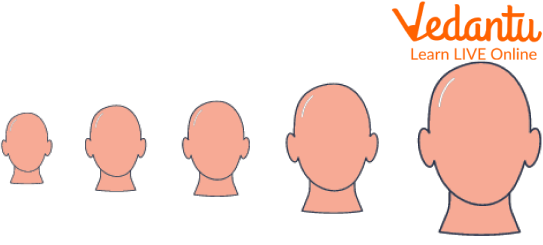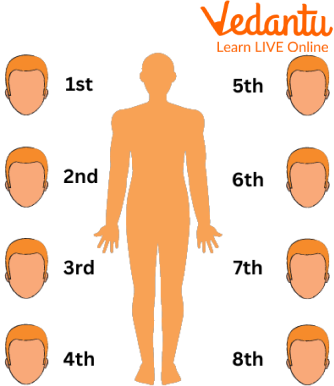




Overview of Head-Body Proportions
Do you wonder sometimes about our bodies? How amazing our bodies are. We all have so many questions about the human body as to what is inside it, how it works, and what is the proportion of different body parts.
Growth is very important for humans as well as for animals. The changes in the body proportion happen systematically so that the ratio between the head and body height decreases with time. The study of body proportions is substantial as it takes a look at the relations of the human body as a whole and with each other too. We will discuss the normal head circumference of newborns, newborn baby height and much more. Let us take a look at the article below to help under this topic better.
What is Head-Body Proportion?
When babies are born, their heads are comparatively bigger than their bodies. Also, the weight of the human head is higher. It is said that their big heads hold big brains as they are in the process of learning many things. But as time passes by and they grow old and tall their body proportion changes. Other body parts start growing like their limbs and trunk but the head does not grow much after a while.
Basics of Human Proportions
The key principle of any human body is the proportion between its body parts. Even though there is a contrast difference between individuals, the proportions have to be within the standard range. There could be a slight difference as every individual is different. In medical science, the human body runs from the top to the bottom and runs through the middle of the body.
In a human figure, the basic unit of measurement is the “head”- the distance between the top of the head to the chin. Therefore the head would fit 8 times the total height.

8 Headcount
The Ratio of Head-Body Proportions
The ratio between the head and the body is a bit complex. The height and the normal head circumference of newborns are measured in centimetres. The current study shows that there has to be a significant relationship between the head and the body.
The head-body ratio changes from one to four for a small child to one to eight for an adult.
Not every adult has a 1 to 8 head-to-body ratio. If we take an average, generally this ratio comes between 1 to 6.5 and 1 to 8. Comparatively, infants and children have bigger heads but their body becomes taller than their head as they grow.
Types of Body Proportions
The human body is divided into three types of body proportions.
5-5
4-6
3-7
There is a formula with the help of which you can calculate your body type.
Body ratio formula = (Height - Leg length): Leg length
E.g: If your,
Height = 174 cm
Leg length (waistline to foot) = 95 cm
Body ratio = (Height - Leg Length): Leg Length
= (174-95 cm) : 95 cm
= 79: 95 cm
= 1:1.2
Interesting Facts About Head-Body Proportions
There are quite a few physical changes that happen in the human body in the first number of years. Let us have a look at some of these interesting facts:
Did you know that while we are in the womb, our head takes about 50% of our total length?
Men are 8 heads high. Pretty sure you must be wondering what this means? It means that the height of an average person is equal to eight times the height of a regular head.
The average newborn baby height is 19–20 inches or 48.2–50.8 centimetres.
The female body on average is smaller than that of a man. A woman’s height can be 7 or 7.5 heads the height of a regular head.
There always are exceptions where women can be much taller than men.

The Length of the Head Over the Years
Summary
From this topic on Head Body Proportions, we have learnt that the human body is one of the most complex shapes on the planet. It is very important to learn about the proportions as it is necessary to be anatomically correct. The proportion changes from birth to till the start of your adulthood. It is a fact that kids belonging to the same family also don't grow at the same speed. And the average model helps us to determine which category we belong to. We hope you enjoyed reading this article, in case of any other doubts, feel free to ask in the comments.
FAQs on Head Body Proportions
1. What is meant by head-to-body proportions?
Head-to-body proportion is a method of measuring a person's height by using the size of their head as a unit of length. For example, if a person is said to be 'seven heads tall,' it means their total height is seven times the length of their head from chin to crown. This concept is fundamental in art and anatomy to create realistic figures.
2. What is the typical head-to-body ratio for a newborn baby versus an adult?
A newborn baby has a significantly different head-to-body ratio compared to an adult. Key differences include:
Newborn Baby: The ratio is approximately 1:4, meaning the head makes up about one-quarter of the total body length. This is because the brain and head develop faster in the early stages.
Adult: The average adult has a ratio of about 1:7.5. The body grows much more than the head after birth, resulting in these changed proportions.
3. Why is a baby’s head so large in proportion to its body?
A baby's head is proportionally large because the brain undergoes massive growth and development during the foetal stage and infancy. The skull needs to be large enough to accommodate this rapidly growing brain, which is crucial for developing cognitive and motor functions. The rest of the body, including the limbs and torso, has a slower growth rate and catches up during childhood and adolescence.
4. How do artists use the concept of head-to-body proportions?
Artists use head-to-body proportions as a critical guideline to draw human figures that appear realistic and well-proportioned. By using the head as a standard unit of measurement, they can accurately map out the rest of the body. For instance, an 'ideal' or 'heroic' figure is often drawn to be eight heads tall, a classical standard that helps maintain anatomical accuracy and harmony in their artwork.
5. Is there a 'perfect' or 'ideal' head-to-body ratio for a person?
While the '8-head' proportion is often cited as an artistic ideal, there is no single 'perfect' ratio for a real person. Human body proportions vary widely based on genetics, age, and ethnicity. The average ratio is closer to 7 or 7.5 heads. The concept of an 'ideal' ratio is primarily a tool used in art and illustration rather than a standard for human health or aesthetics.
6. Who first developed the system of using head-to-body proportions?
The system of using the head as a unit of measurement for body proportions was pioneered by the Ancient Greek artists and sculptors. They sought to capture an idealised, mathematically perfect human form in their work. Sculptors like Polykleitos created canons of proportion where the entire body's dimensions were determined by a basic module, which was often the head.









